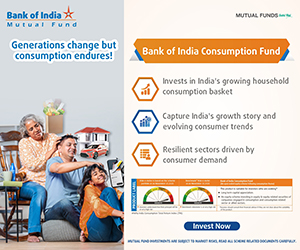From Land of Opportunities to Land of Opportunities

As a child I grew up with the notion that the west was the land of opportunities. And it was the same for thousands of teenagers growing in the “just liberalized” India. The dream of many Indian students was to set foot on the land where opportunities mushroomed at a rate faster than we had ever imagined. This led the best of the students to take a crack at the GREs and GMATs to crack open the doors to the West. Talent started moving westwards in droves and a new term; “Brain Drain” took birth. A few like me who decided to stay back were left feeling deprived.
Contrast this picture with what we are seeing today. Many of those who formed part of the “Brain Drain” family have taken a U turn and have headed straight back to home sweet home. All this has happened in a period of less than 20 years. The tables seem to have turned by 180 degrees.
I am amazed at this once unthinkable “metamorphosis”. Why do people want to leave a land replete with great infrastructure and order and head towards a land of chaos and grime? What is this journey from Brain Drain to Reverse Brain Drain all about?
To answer this question, let's go back in time when young bright minds got attracted to the west like the children. of Hamelin to the Pied Piper. Even as the brain drain was flowing unstoppably, it was the industrious parents who were digging into their savings for funding the long journey that their children had decided to take. Clearly there were no institutions falling head over heels to lend the money. It was hard earned savings and not easy debt which became the fuel for the long journey to the land of opportunity. Had it not been for the savings of their parents, many of my friends would have missed the bus (sorry, aircraft).
Indians have always been serious savers. Mr. R Vaidyanathan, professor of finance, IIM, Bangalore, in his article “Why the decline o f We s t i s best for u s – A n d t h e m ” in http://www.firstpost.com/world/why-the-decline-of-the-west-is-best-for-us-and-them-104882.html#en says that “At no point in the last 20 years has foreign investment both direct and indirect (portfolio investment popularly known as FII flows) been more than 10% of our domestic investment.”
It is interesting to trace out the source of investment of our economy. In India, investments have been funded by millions of housewives who manage their homes brilliantly. The savings that households channel into banks has built the foundation of our economy. The prudent saver is having the last laugh today when he sees people globally get sucked into the whirlpool of debt. His simple living and discipline has held him in good stead.
While the “west” has suffered because of its unstinted love for “consumerism” and “credit” culture that has pervaded the society at large, in India even we want to pay off our credit card outstanding as fast as we can. In the western world people. Bought everything their hearts desired. People bought more than they could afford. It was the cult of credit that shaped lives. There was no notion whatsoever of “saving for a rainy day”. They were not worried about the rains for they knew that the government had a shelter not just for rain but for every other catastrophe one could think of. Old Age, Health, Single Motherhood whatever, the government had an answer for everything. They knew state was responsible for their lives and even for their death. The “dole” was their birthright. The dole had given legitimacy to begging.
Back home there was no dole. If at all, there was the fear of the hole in their pockets if they did not plan for the future. One had to learn to swim to stay afloat. It brought discipline and built stamina. And Indians took to this swimming with gusto. Thus learning to swim brought with it long lasting benefits that have held our economy in good stead.
So what was it that made Indians strive hard under trying conditions? What was it that made Indians embrace the challenges that were thrown upon them?
It was our strong social infrastructure which is popularly known as the “family”. The well knit family structure played and till this day continues to play a defining role in our lives. Our decisions, our priorities, our needs, our desires are all shaped by our family's needs. For us, tending to the needs of our family is central to our identity. We are what we are because of our family. We have never lived under any false notion that our government or an institution or a trust would come to the rescue of our family in dire straits. This vulnerability made us “austere” by choice. We chose to sacrifice “consumerism” and instead saved for the family. So what did this lead to? What was the consequence of our “savings”.
When millions of families save, real money (as against printing notes) got into the banks and from the banks as investments into industry. Some of the savings found its way directly into stock markets as equity capital. All in all our country's investments got funded by real capital formed in millions of homes through savings generated by some astute management of the home budget by millions of housewives.
By contrast in the west the need to save was certainly not a priority. It was always felt that one could fall back on the government in case of an emergency. To add to this, family ties were either tenuous or non-existent. Hence, the motivation to save for someone was imperceptible.
In fact, the situation was quite contrary to what was playing out in emerging nations. The millions of families in the west were over-spending beyond their means. The credit culture seeped deep into their DNA and encouraged them to take a dive deep into “consumerism”. People spent as if there was no tomorrow. Hence, families had no real money left to pump into their economies.
However, for the rest of the world, the “perception” of the west was extremely positive. It was seen as rich, advanced, and stable. There was demand for their currency. There was a strong belief among people that both the “Dollar” and the “Euro” were among the best options for store of “value”. The unprecedented penchant for the dollar and euro allowed the central banks in the US and Europe to go on printing money without the currencies losing any value. Thus the savings of the world created this deluge of dollars that fuelled consumerism. However, slowly and gradually US debt started piling up.
People bought consumer goods on loans, food on loans and homes on loans. Home values went sky rocketing which resulted in more borrowing, more lending and more printing of money by the government. People were exuberant in the belief that money will drive the value of assets perpetually upwards. The mood of exuberance finally hit a road block when the realization dawned that a very large number of borrowers were insolvent and there was no hope in hell that they could repay their loans. At the same time inflated home prices began to tone down the demand. Together these two factors played havoc causing unprecedented selling pressure. Even before one realized, the mood changed from exuberance to that of “extreme pessimism”. This resulted in the fall in confidence, credit squeeze and consequently a crash in the stock market. Thus, what appeared to be a virtuous cycle proved to be a vicious cycle in the end.
In the US, half the households are invested in the stock markets and hence the personal damage to people was all encompassing. In contrast, in India, barely 5% of our household savings goes into the stock market.
Excessive dependence of the state and changing demographics are two key factors devastating the West. According to a Wall Street journal article nearly half of US households avail of social security of one kind or the other. This worked fine when the number of people working was substantially higher than the number of people being supported by the government. Longevity has bloated the old age dependant population and burdened a shrinking younger population with the responsibility to tend to the needs of the old. The ratio clearly is not sustainable. This leaves the government in a tight spot. If they default on their promises of social security they stand to lose popularity and get ousted from power. So governments continue to borrow to feed their electorate which in turn raises their debt.
Such acts of profligacy have raised debt levels to nearly 400% of the GDP. So unless GDP grows at a breakneck speed it will be impossible for the West to pay off its accumulated debts. The “old” comprise a large proportion of the population and this situation is only threatening to get even worse as we move into the future. Hence the probability of rapid GDP growth is bleak to say the least.
In India there is hardly anything like social security. From the beginning we have been compelled to build our own nest egg. “Austerity” which is being prescribed a panacea for the west was being practiced by us since time immemorial because that is the only way we know to live. Therefore despite the fiscal deficits that show up in the government's finances year after year, our debt position is nowhere close to that of the west.
Some time back a friend who had migrated to the US some twenty years ago suddenly decided to head back home because in India he still had his mother and his home to fall back upon.
Queries
-
What is the benefit of mutual fund STP
Aug 29, 2019
-
How much to invest to meet target amount of Rs 2 Crores
Aug 26, 2019
-
Can I achieve my financial goals with my current mutual fund investments
Aug 24, 2019
-
Can you tell me return of various indices
Aug 19, 2019
-
What would be the post tax return on different investments
Aug 18, 2019
-
Which Principal Mutual Fund scheme will be suitable for my retirement corpus
Aug 16, 2019
-
What is the minimum holding period for availing NCD interest
Aug 4, 2019
Top Performing Mutual Funds
Recommended Reading
Fund News
-
Zerodha Mutual Fund launches Zerodha Nifty Short Duration G Sec Index Fund
Dec 26, 2025 by Advisorkhoj Team
-
Groww Mutual Fund launches Groww Nifty Chemicals ETF
Dec 26, 2025 by Advisorkhoj Team
-
DSP Mutual Fund launches DSP Nifty Next 50 ETF
Dec 19, 2025 by Advisorkhoj Team
-
DSP Mutual Fund launches DSP Nifty 500 Index Fund
Dec 19, 2025 by Advisorkhoj Team
-
Kotak Mahindra Mutual Fund launches Kotak Nifty Next 50 ETF
Dec 18, 2025 by Advisorkhoj Team














